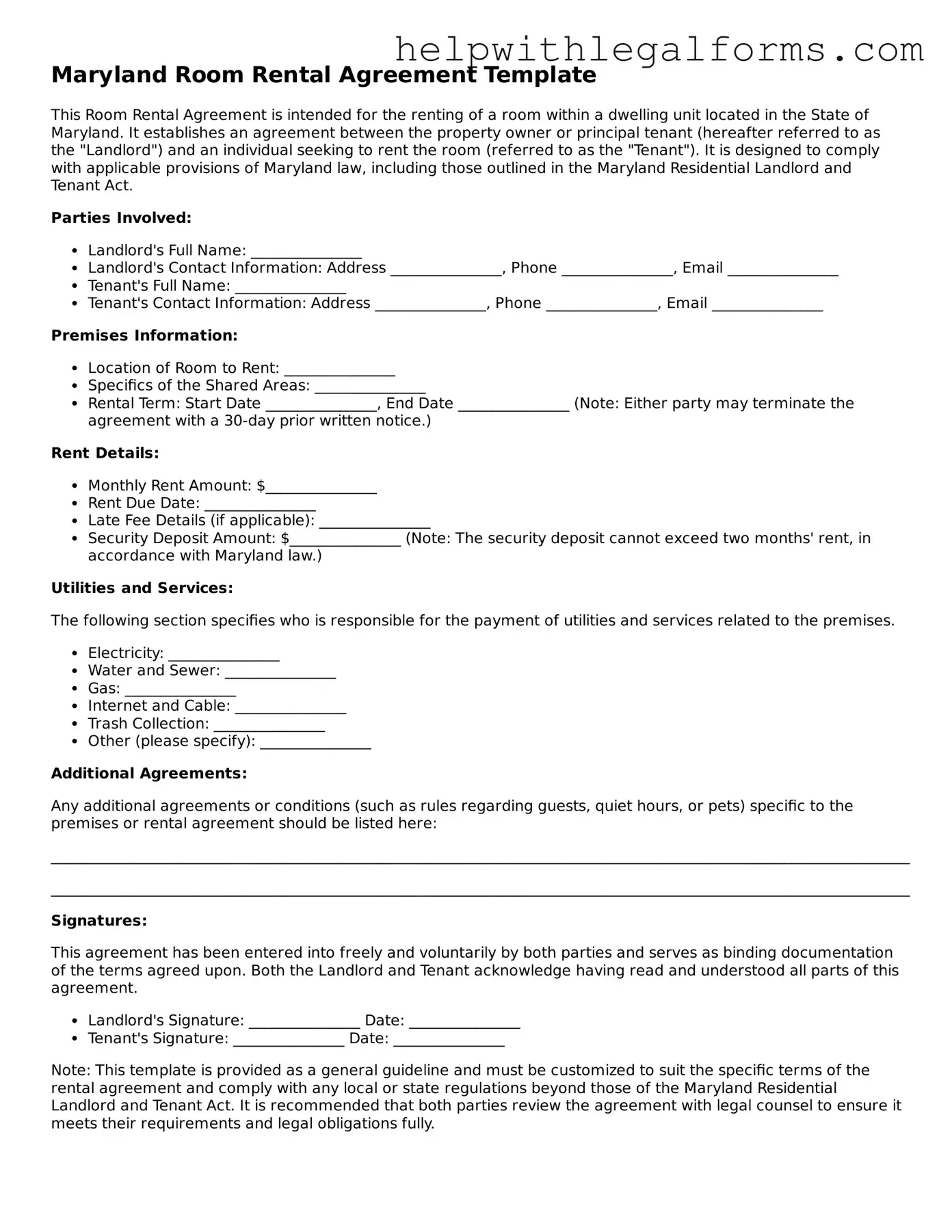Maryland Room Rental Agreement Template
This Room Rental Agreement is intended for the renting of a room within a dwelling unit located in the State of Maryland. It establishes an agreement between the property owner or principal tenant (hereafter referred to as the "Landlord") and an individual seeking to rent the room (referred to as the "Tenant"). It is designed to comply with applicable provisions of Maryland law, including those outlined in the Maryland Residential Landlord and Tenant Act.
Parties Involved:
- Landlord's Full Name: _______________
- Landlord's Contact Information: Address _______________, Phone _______________, Email _______________
- Tenant's Full Name: _______________
- Tenant's Contact Information: Address _______________, Phone _______________, Email _______________
Premises Information:
- Location of Room to Rent: _______________
- Specifics of the Shared Areas: _______________
- Rental Term: Start Date _______________, End Date _______________ (Note: Either party may terminate the agreement with a 30-day prior written notice.)
Rent Details:
- Monthly Rent Amount: $_______________
- Rent Due Date: _______________
- Late Fee Details (if applicable): _______________
- Security Deposit Amount: $_______________ (Note: The security deposit cannot exceed two months' rent, in accordance with Maryland law.)
Utilities and Services:
The following section specifies who is responsible for the payment of utilities and services related to the premises.
- Electricity: _______________
- Water and Sewer: _______________
- Gas: _______________
- Internet and Cable: _______________
- Trash Collection: _______________
- Other (please specify): _______________
Additional Agreements:
Any additional agreements or conditions (such as rules regarding guests, quiet hours, or pets) specific to the premises or rental agreement should be listed here:
____________________________________________________________________________________________________________________
____________________________________________________________________________________________________________________
Signatures:
This agreement has been entered into freely and voluntarily by both parties and serves as binding documentation of the terms agreed upon. Both the Landlord and Tenant acknowledge having read and understood all parts of this agreement.
- Landlord's Signature: _______________ Date: _______________
- Tenant's Signature: _______________ Date: _______________
Note: This template is provided as a general guideline and must be customized to suit the specific terms of the rental agreement and comply with any local or state regulations beyond those of the Maryland Residential Landlord and Tenant Act. It is recommended that both parties review the agreement with legal counsel to ensure it meets their requirements and legal obligations fully.
